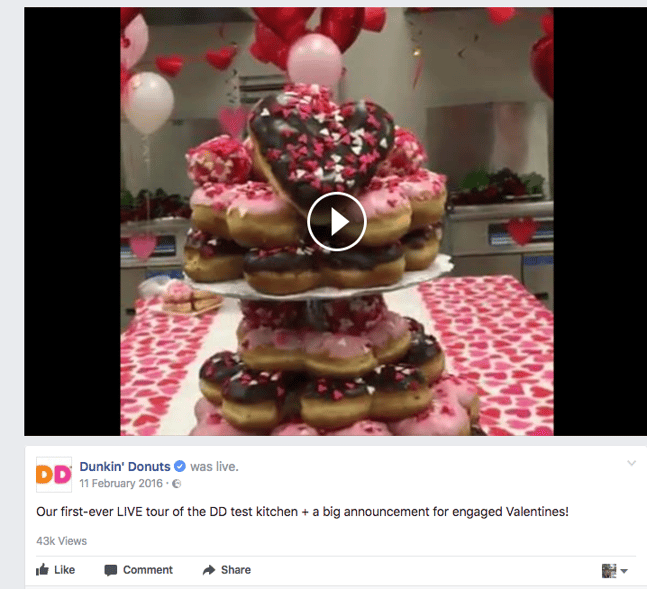
Get weekly
HubSpot updates
Like I said, weird and wonderful.
Whilst the primary aim of people logging into Facebook is to engage with their friends, family and social circles, the platform is now recognised as a fertile place in which to advertise.
One way in which businesses and organisations are engaging with their audiences is through video marketing and sharing of online video content. The goal being to create a piece of content that people will share themselves and, in turn, generate new followers, brand advocates and, ultimately, paying customers.
However, it is a tricky medium to master. Making a video worthy of sharing is one thing, but hoping it gets the attention needed for it to go viral is a different matter altogether. Here, we’ll take a look at some excellent examples of video Facebook marketing and some of the reasons behind why they were so successful.
The ALS Association Ice Bucket Challenge
If you want an example of a video campaign absolutely dominating social media, then look no further than the ALS Association’s Ice Bucket Challenge. If you were logged into Facebook anytime throughout 2014/15, you probably would have encountered a deluge of videos where people would dump buckets of ice cold water over their heads and then challenge their friends to do the same — all in the name of charity.This worked so well because the premise was beautifully simple, personal, fun and all in the name of a good cause. It allowed users to get involved with the campaign and, most importantly for the ALS Association, raise awareness of amyotrophic lateral sclerosis. This helped to raise crucial funds to continue their valuable research.
To put into perspective how successful the campaign was on Facebook, 17 million videos from 159 countries were uploaded, with 70 million views generated by users alone — all from a campaign spend of £0. Nothing. Not a penny.
Throw in total viewings of Ice Bucket Challenge videos to over 440 million people, plus countless celebrity endorsements and you have a video campaign which is truly staggering in its achievements.
#Likeagirl — Always
No one likes a derogatory stereotype, and the premise behind this 2014 campaign by cosmetics brand Always was to smash the outdated and sexist term ‘like a girl’ — turning the insult on its head to become not only empowering but, most importantly, positive and instantly relatable.The video that was shared across Facebook (and other social channels with the hashtag #likeagirl) asked the question what it was to perform certain actions ‘like a girl’; such as running, fighting and throwing. The statements of ‘throwing like a girl’ or ‘running like a girl’ were broken down and turned from derogatory and outmoded statements into something more aspiring — doing the best that you can.
This is perhaps what helped the campaign resonate with younger women and girls in particular, turning an ingrained, petty insult into something infinitely more empowering and positively relevant to the age we live in.
The campaign instantly connected with its core audience, and the message of positivity and empowerment was ideal for promotion amongst the media-savvy users of Facebook. The video gained over 250,000 likes on its own, whilst the Always page gained over 500,000 likes. On YouTube, the video currently has over 64 million views.
Dove Real Beauty Sketches
In the same vein as the #likeagirl video campaign, Dove’s Real Beauty Sketches looked to improve on people’s perceptions. But, instead of challenging gender stereotypes, this tackled the issue of body confidence head on with the interesting use of an FBI sketch artist.The premise of the campaign was simple: ask regular people to describe their facial features, followed by their friends and families describing them, too. The sketch artist then presented drawings of the people based on their own comments alongside how they were described by friends and family. The results would often be wildly different, but the key takeaway was this: in general, people were often overly critical of themselves and their looks — something Dove aimed to change.
The campaign clearly resonated with users of Facebook and this was perhaps due to the way Dove didn’t push the outright message of ‘Stop being overly critical of yourself!’ Instead, it let the viewers draw their own conclusion (no pun intended…) of this statement through the thoughtfully produced video, which went on to be shared over 630,000 times and has been viewed more than 180 million times to date on Facebook.
The BuzzFeed Watermelon
We’ve had some pretty inspirational campaigns so far in this list, but this example is one that on the face of it, definitely doesn’t fit the traditional mould of successful live streaming.Friday 8th April 2016 started like any other day. People logged into Facebook to do the usual things; share their thoughts on daily events, upload pictures of their daily lives and, for some reason, tuned into a live-stream of two BuzzFeed employees attempting to explode a watermelon using nothing but the power of elastic bands. There was no logical reason behind this; no campaign push, no product launch - just two people, a collection of elastic bands and a watermelon.
For 45 minutes, Facebook users tuned into watch the fruit-based drama unfold. At its peak, the video gained 807,000 live viewers and 315,000 comments by people just watching and waiting in anticipation for the inevitable chunky horror that would eventually unfold, all in glorious high definition. Of course, the watermelon did eventually meet its heroic demise in front of a live viewership that exceeded the population of Leeds - Quite astounding really.
#RIPwatermelon
Dunkin Donuts Development Kitchen
This 2016 Dunkin Donuts video is another example of how a seemingly innocuous activity streamed live over Facebook piqued audience's interest and, as a result, became a popular video to both share and watch.

The general premise of the video was to give a glimpse into Dunkin Donuts’ ‘test kitchen’ and watch how they create new products. With the video being released during the build up to Valentine's Day, the development in this particular video was that of a donut wedding cake — something which seemingly went down well with followers of Dunkin Donuts’ Facebook page as the video attracted 36,000 live viewers. Granted, it doesn’t sound like much, but 36,000 people watching a cake get made? That’s pretty special.
This video makes it into our examples because, whilst the viewing and sharing figures are small in comparison to the others on this list, the actual content and delivery of the video was perfect for Dunkin Donuts’ audience.
So what have we learned from these examples? Well, producing a successful Facebook video is something of a dark art, but perhaps one of the themes throughout these examples is that all the videos garnered viewer attention through curiosity, and made them stay through grabbing their attention, be it through relatable, personal content, or a sense of fun and expectation. If you can grab your audience’s attention and keep them occupied for even just a couple of minutes you’ll be on the right track to creating a successful video marketing campaign.
via GIPHY
What’s been the best example of video marketing you’ve seen on Facebook recently? Tell us more in the comments section.

